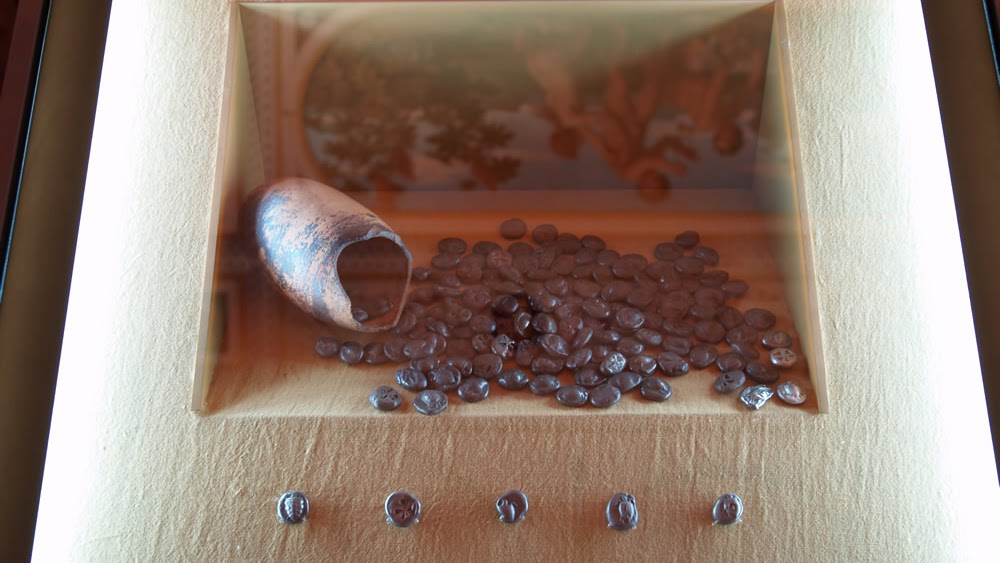The Numismatic Museum in Athens (Greek: ??????????? ???????) is one of the most important museums of Greece and houses one of the greatest collections of coins, ancient and modern, in the world. The museum itself is housed in the mansion of the archaeologist Heinrich Schliemann, formally known as Iliou Melathron (Greek: ????? ????????, "Palace of Ilion").

History
The first tries of coins collecting by the state began shortly after the independence of Greece in Aegina. The collection was enriched after excavations, purchases and donations. The museum was founded in 1838, around the same era with the National Archaeological Museum but it was not until many years after and several decrees that became an independent organization. Initially, the collection was a part of the National Library of Greece and was housed at the main building of the University of Athens and later at the building of the Academy of Athens where the collection was first exhibited. In 1946, the collection was moved at the National Archaeological Museum. The organization of the museum became twice independent, in 1893 and 1965.
The Iliou Melathron was granted in order to house the collection in 1984 and after a major renovation it finally opened in 1998.
Coin Museum Video
The Iliou Melathron
The Numismatic Museum is housed at the Iliou Melathron, a three-storey building on Panepistimiou Street. It was built between 1878-1880 for Heinrich Schliemann and the architect was the then famous Ernst Ziller. At the time of its completion, it was considered to be the most magnificent private residence of Athens. Its design was inspired by the Renaissance Revival movement as well as Neoclassicism, while the interior is influenced by the architecture of Pompeii. As a result, the rooms are decorated with mosaics and murals depicting either themes from the Trojan War or Greek mottos. In 1927, the widow of Heinrich Schliemann, Sophia, sold the building to the Greek State and it was subsequently used as the seat of the Council of State and later the Court of Cassation.
The use of the building as a courthouse caused much damage. After the building was chosen to house the Numismatic Museum, it underwent a major renovation under which the floor mosaics and the murals were restored. Finally, the numismatic collection was inaugurated in the partly restored building in 1998 while the whole collection became viewable in 2007.
Collections
The collection of the museum contains 600,000 objects, mainly coins but also medals, standard masses, dies, stamps and others, from the 14th century BC until modern times. The collection is arranged in such a way so as to follow the history of coinage. The museum holds a very important collection of coins from the 6th century BC until the 5th century CE like those from the Greek Poleis and the Hellenistic and Roman periods. There also major Byzantine and Medieval collections from Western Europe, the East and the Ottoman Empire.
A large portion of the collection is constituted by coins that were found in hoards while the rest comes from the initial collection of Aegina, recent excavations in mainland Greece and donations.
The museum houses a library of 12,000 books specialized in the study of coinage. There is also a perfectly equipped conservation laboratory. Khan

Location and visitors information
The Numismatic Museum is on 12 Panepistimiou Street near Syntagma Square. It is served by the Syntagma metro station. There is a museum shop and a coffeehouse in the garden.
Are You Looking for Products
Here some products related to "Numismatic Museum Of Athens".
Museum Artifacts Theme Wa..
Smithsonian National Air ..
Ancient Roman Bronze Coin..
Assyrian Reliefs and Ivor..
Get these at Amazon.com* amzn.to is official short URL for Amazon.com, provided by Bitly
Source of the article : here






EmoticonEmoticon